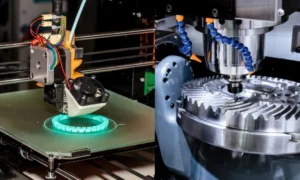Injury, illness, and chronic conditions often require imaging to thoroughly assess what’s going on inside the body. Medical imaging provides doctors visual data to identify issues and determine optimal treatment plans. But when specifically is medical imaging warranted? Keep reading to learn who can benefit most from medical imaging services like PRP Imaging where you get X-rays, CT scans, MRIs, and ultrasounds so you understand when and why they may be recommended by your doctor.
Diagnosing New Symptoms
When patients present with unfamiliar symptoms, medical imaging allows doctors to pinpoint potential causes. Symptoms like pain, limited mobility, or strange sensations frequently require imaging to uncover the issue.
For example, chronic knee pain may warrant an MRI to visualize soft tissues like cartilage, ligaments, and tendons in detail. Diagnostic insight empowers precise treatment.
Evaluating Known Conditions
Those managing ongoing health conditions often need periodic imaging to monitor disease progression. Scans help doctors assess the current status of conditions like cancers, arthritis, heart disease, and more.
Tracking changes over time helps optimize treatment plans. Even stable conditions require occasional checks for subtle changes.
Pre-Surgery Scoping
Upcoming surgery frequently warrants pre-operative imaging to inform surgical approach. Scans give the surgical team an inside look at anatomy to evaluate challenges and formulate the game plan.
For procedures like knee replacement, imaging eliminates guesswork so surgeons know what to expect before entering the operating room.
Emergency Care Triage
In emergency scenarios like traumatic accidents, imaging rapidly unveils internal injuries that may not be outwardly apparent. CT scans, X-rays and ultrasounds help ER doctors urgently prioritize interventions to stabilize patients.
Fast answers facilitate life-saving treatment when every minute counts. Imaging prevents delays in emergency care.
Cancer Screening
Cancer can elude early detection without imaging. Mammograms, lung CTs, and tumor-specific MRI scans aid in identifying cancers so patients can begin treatment promptly when outcomes are most favorable.
Even those without symptoms may benefit from screening based on risk factors and age. Imaging access saves lives.
Chronic Disease Management
Managing lifelong diseases often involves periodic scans to ensure maintained health. For example, cystic fibrosis patients need frequent chest CTs to check lung function while diabetics may undergo vascular ultrasounds to monitor circulation. Ongoing imaging becomes part of overall care. Tracking changes prevents complications.
Pediatric Health Examination
Sometimes pediatric health concerns need medical imaging if a child has difficulty communicating symptoms. Doctors can visualize problems clearly on ultrasounds, MRIs and CTs. Children should be careful when pediatricians proceed but imaging may be appropriate to obtain objective data – like an ultrasound for unexplained abdominal pain. Handling and protocols are specific to children.
Integrative Medicine Approaches
Some functional and integrative medicine clinics provide specialized imaging for identifying health indicators. For instance, thermography scans look at inflammation patterns, while heart rate variability imaging looks at stress. Such expanded uses of imaging refine integrated treatments and measure wellbeing beyond just diagnostics. The applications evolve.
Conclusion
Anyone with unfamiliar symptoms, known conditions, planned surgeries, emergency needs, high cancer risk, or chronic diseases benefits greatly from medical imaging services throughout their care. Discuss options with your doctor to take advantage of these vital diagnostic and monitoring tools as needed for your health.



































